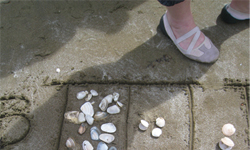

<p><img class=" alignright size-full wp-image-112" style="margin: 5px; float: right;" src="http://schoolnewsnz.fastrackdev.com/wp-content/uploads/2011/10/Department_of_Conversation.jpg" alt="Department of Conversation" width="250" height="150" />The Department of Conservation (DOC) looks after one third of the land mass of New Zealand on behalf of the people of New Zealand.</p>
<p> <!--more--> </p>
<p>While many areas are remote, wild and physically challenging a lot of the DOC estate is close to urban areas and provides opportunity for both guided and independent outside-the-classroom experiences for students and teachers.</p>
<p>From the Poor Knights Islands Marine Reserve in Northland to the Kepler Track in Southland; and from Tiritiri Matangi Island in the Hauraki Gulf to Oriental Bay&#8217;s seascape mural in Wellington, the teaching of the New Zealand curriculum can be enhanced by field trips that cater for year 1 to 13 students.</p>
<p>External learning experiences on the DOC estate fall into two categories – assisted or independent. For either category the DOC website is the key to determining resources, curriculum links, activities and contacts.</p>
<p>There are literally hundreds of <a class="wpil_keyword_link" href="https://www.schoolnews.co.nz/2015/10/developing-opportunities-at-school-with-a-view/" title="opportunities" data-wpil-keyword-link="linked" target="_blank">opportunities</a> out there, so for the purposes of this article a taste of assisted and independent field trips sites at the mid-secondary and mid-primary level have been have been selected.</p>
<p>Tiritiri Matangi, Hauraki Gulf Marine Park</p>
<p>Tiritiri Matangi Island boasts one of the most successful community-based conservation projects in the world. In just 10 years, thousands of volunteers have planted close to 300,000 trees, restoring pasture to native forest and creating a home for some of New Zealand&#8217;s most endangered birds – including takahē, little spotted kiwi, kōkako, hihi (stitchbird) and tieke (saddleback).</p>
<p>Visits are suitable for year 4 to year 13 students and must be booked well in advance due to the island&#8217;s popularity. Travel by ferry to the island can be from downtown Auckland or Gulf Harbour.</p>
<p>A comprehensive teaching resource is available and volunteer guides make a day trip a great learning experience.</p>
<p>Poor Knights Islands Marine Reserve, Northland</p>
<p>In 1981, the ocean surrounding the Poor Knights Islands was established as New Zealand&#8217;s second marine reserve. The marine reserve extends for 800 metres offshore around the Poor Knights Islands.</p>
<p>Beneath the waves at the Poor Knights an ocean of diving has been compressed into a relatively small area. The caves, arches, tunnels and sheer cliffs provide a great variety of habitats to explore.</p>
<p>Visitors to the marine reserve are welcome, and boating, snorkelling, scuba diving and canoeing are encouraged.</p>
<p>This would be a great senior secondary biology field trip with astounding marine biodiversity being visible in these crystal clear waters.</p>
<p>There is no DOC-managed accommodation at Poor Knights Islands Marine Reserve. However, Tutukaka Harbour offers the closest place to stay and is the base for commercial diving companies.</p>
<p>Seascape Mural, Wellington</p>
<p>The seascape mural is located in Wellington&#8217;s Oriental Bay, near Te Papa and Waitangi Park.</p>
<p>The community has worked together to create a mural which features around 40 marine species found in Wellington&#8217;s marine environment.</p>
<p>It provides an exciting &#8220;outdoor classroom&#8221; that is easily accessible to Wellington schools.</p>
<p>In a field trip to Oriental Bay the seascape mural can provide a focus for primary students to learn more about the marine environment, develop key competencies (thinking, making meaning, relating to others, self-management, participating and contributing) and address the key environmental concepts of interdependence, sustainability, biodiversity and personal and social responsibility for action.</p>
<p>Native Plant Nursery, Canterbury</p>
<p>Motukarara Conservation Nursery is located within the Waihora Domain at Motukarara, 30 km from the centre of Christchurch.</p>
<p>The nursery grows Canterbury native plants exclusively. Plants are propagated from seed collected from native remnants throughout the Canterbury region.</p>
<p>The teaching resource supports teachers and students who visit the nursery to learn about Canterbury&#8217;s plant communities and their interactions with native animals. A visit would suit both secondary and primary groups.</p>
<p>This resource can be used in other locations to explore native plant communities and habitats.</p>
<p>These are just a few of the many opportunities for field trips on the DOC estate.</p>
<p>To find out check out the DOC website, www.doc.govt.nz, not only will you find out about on-site learning but also access a number of online resources. So go out, get involved, and enjoy!</p>

EXCLUSIVE: Teachers used to be paid two to three times more than minimum wage workers,…
After an “overwhelming” vote to reject the latest Government offer, secondary school teachers will begin…
Second-language learning should be compulsory, says a new report from a forum bringing together academics,…
A new entitlement aimed to improve access to learning support coordinators for schools with students…
Educators have raised questions about the Ministry of Education’s new secondary school subjects, set to…
Professional learning and development (PLD) for teachers needs to be higher impact for teachers and…
This website uses cookies.